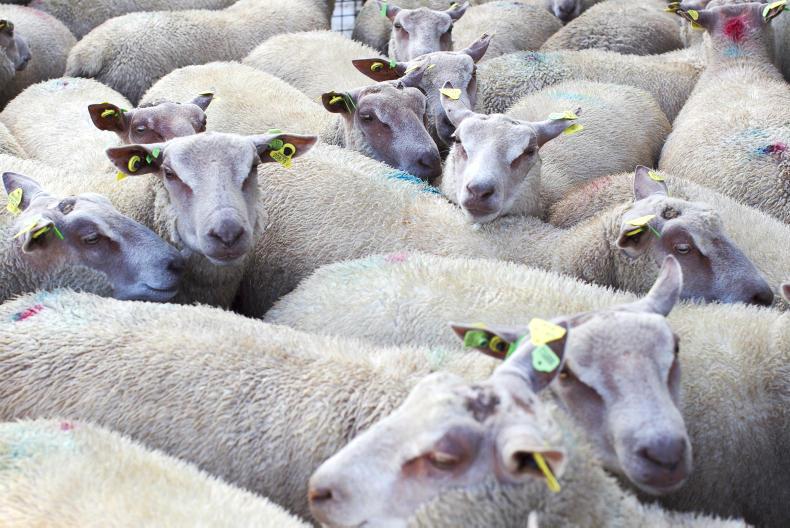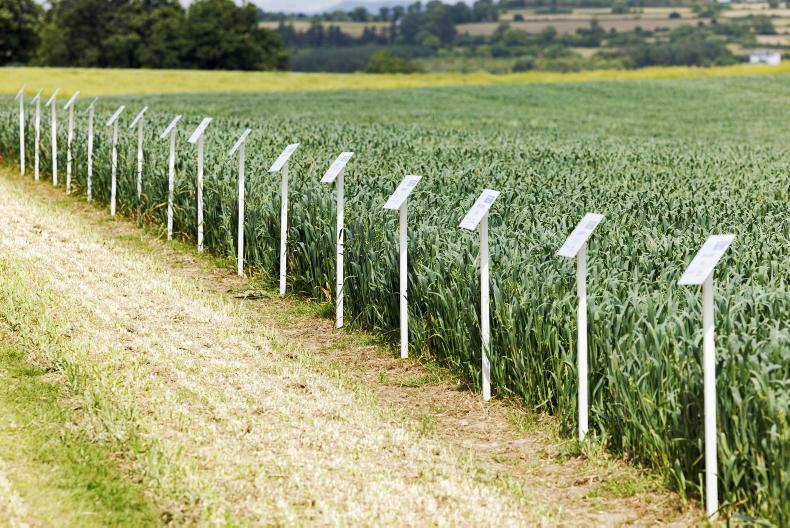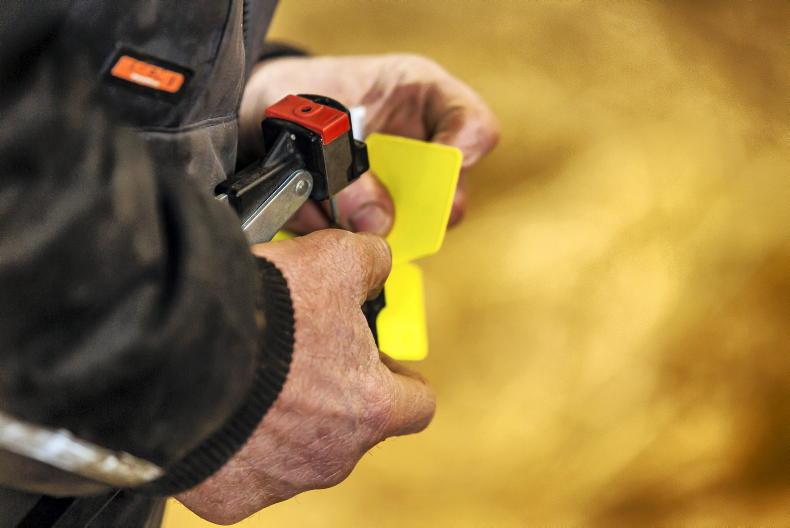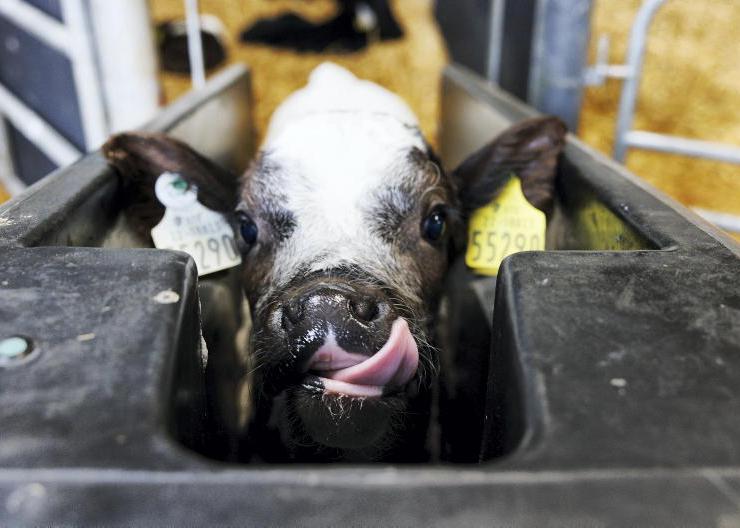In its simplest terms, the introduction of mandatory electronic tagging from 1 June means that any sheep leaving their holding from 1 June 2019 must possess a form of electronic identification.
Lambs under 12 months moving directly from the holding of origin to slaughter can be identified and moved with a single electronic tag in their right ear.
This is the only category of sheep that can be identified in this manner.
All other sheep leaving a holding from 1 June and moving to a mart, farm-to-farm movement or livestock show must be identified with a full EID tag set.
This consists of an electronic tag in the animal’s right ear and a conventional tag in the left ear.
Bolus set
Alternatively, an electronic bolus set can be used.
In such a scenario, sheep must be tagged with a conventional blue tag to denote the presence of a bolus, with the tag possessing a number that corresponds to the electronic bolus set.
Lambs traded prior to 1 June
While numbers are likely to be small, there will be lambs born in 2019 which have moved through marts or farm to farm that only possess a conventional tag in their left ear.
A matching electronic tag can be ordered or the existing conventional tag can be removed and replaced with a new EID tag set
If these lambs are moving from 1 June 2019 onwards, they must be upgraded to electronic status before movement is permitted.
This can be carried out in the same manner as present.
A matching electronic tag can be ordered or the existing conventional tag can be removed and replaced with a new EID tag set.
The change must be correlated and recorded in your flock register. The same options are available for replacement of lost tags.
Recording changes
All active sheep flocks on the Department of Agriculture database should now have received a new dispatch booklet.
The new booklet is being distributed to facilitate the recording of tags electronically and printing of tag number lists.
Each document will contain a serial number and barcode.
Only documents with this barcode can be used for recording the movement of sheep from 1 June 2019.
These books will be accompanied by an updated step-by-step guide to the national sheep identification system (NSIS), which explains the new rules coming into place from 1 June 2019.
CPRs
The Department has approved a number of factories and marts as central points of recording (CPR) and is in the process of approving more. These CPRs will scan EID tags of sheep in a batch and present producers with a printed list of tag numbers corresponding to the serial number barcode on the dispatch document.
In general, the CPRs will provide the printed list of tag numbers to the farmer on the day that the sheep move, while some factories state this may be circulated with the remittance where producers are not waiting until sheep are slaughtered
This list needs to be retained for inspection purposes (can store or affix to the relevant copy of the dispatch document).
For farmers who have their own electronic reading equipment and a printer, they can read the tag numbers and print a list of tags for sheep involvement in the movement and staple this print-out on to the dispatch document.
A copy should also be retained for personal records.
Sheep purchasers
The Department advises that marts acting as CPRs will provide the purchaser of the sheep with a printed list of tag numbers along with the white dispatch document it relates to or a replica of the dispatch document containing the tag numbers.
This means that for farmers moving sheep to a premises, which is approved as a CPR, there will be no need to record the tag numbers of sheep on the dispatch document before leaving the holding.
The Department are also keen to advise farmers that once the new legislation comes into play, it is important to ensure that the listing of tag numbers on whatever print-out is given matches the number of sheep in the batch and that the serial number on the tag list matches the dispatch document.
They state that processes will be in place to deal with cases where tags do not scan, with these read manually and recorded on the list.
Missing tags
The Department of Agriculture’s guidelines for approval as a CPR gives advice on how to handle sheep presented with lost tags.
“Where a sheep has been double-tagged with an EID device and a corresponding conventional tag, and one or other of these tags is missing on presentation, provided it is accompanied by the correct documentation and there is evidence of a second tag having been applied, it can be accepted without the need to apply a new tag.
“Where the missing tag is the electronic element of an EID set, the CPR must manually read the tag number from the corresponding conventional tag and record it on the printout.
"Where a sheep is presented to a mart with a single EID tag and there is no evidence that a corresponding conventional tag has been applied to the other ear to indicate that the animal was originally tagged with an EID set, the animal should be retained until it is properly identified with an EID set of tags.”
Non-CPR premises
Where sheep are being moved to a premises which is not an approved CPR, then current NSIS rules apply.
That is, farmers must record the individual tag number of all sheep moving or, as mentioned previously, where there is electronic reading equipment available on the farm, a listing of tag numbers can be printed and affixed to the dispatch document.
A full list of approved CPR premises will be maintained and updated on an ongoing basis on www.agriculture.gov.ie.
Sheep tag subsidy
The Department is operating a once-off payment to contribute to covering higher costs of implementing mandatory EID tagging.
The subsidy will be calculated on the basis of €1 per single electronic tag or electronic tag set, meaning that for a producer to get the maximum subsidy of €100, they must purchase either 100 single EID tags / EID tag sets or a combination of the two tag types.
The minimum subsidy is €10 or a minimum of 10 tags.
Farmers do not need to apply for this scheme, but note it is only payable on the first order of tags.
The subsidy is paid on EID tag purchases made between 1 October 2018 and 30 September 2019 in a tranche system, with remaining payments in July and October 2019.
The first two tranches of payments included €375,000 paid to 5,500 farmers in the first tranche, while €314,605 was paid to 4,359 farmers in the second tranche.










SHARING OPTIONS